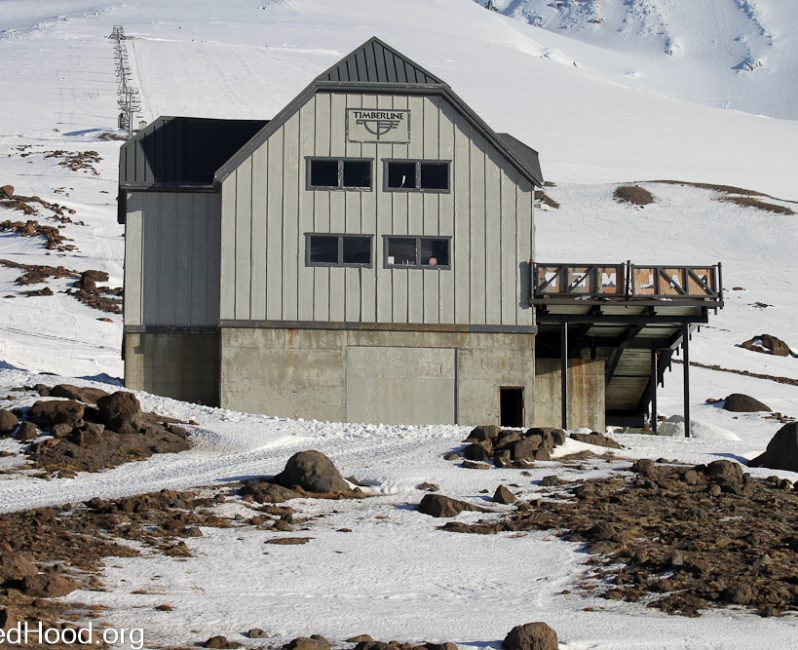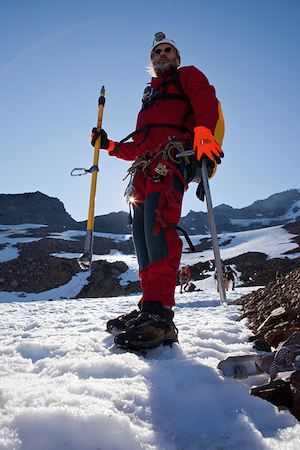Midway between the heavy rainstorm that swamped Mount Hood on Saturday, Jan. 17 and the record-high heat of Sunday, Jan. 25, I took a midweek day off to make some turns with my 10-year-old daughter, Melina. A news item about climate change came on the radio as we were driving up from Portland to the mountain, and I found myself trying to explain the relationship between human progress, fossil fuels, greenhouse gases and the lack of snow on the mountain we have been enjoying together since Melina was four.
Melina is a smart kid with a scientific mind, so I was surprised to learn that she didn’t know the basics of climate change. I guess we never explained it to her directly, and apparently none of her teachers did either.
Well, it took her all of two minutes to grasp the science. People burn fuel and the combustion releases carbon dioxide into the sky, creating the equivalent of a greenhouse in the atmosphere, trapping in heat, and the planet’s temperatures gradually rise.
It is kind of hard to deny the 134-year warming trend that correlates directly with the corresponding rise of greenhouse gases in the atmosphere.
It isn’t exactly complex stuff, after all, is it? Nor is it new. Global warming was well understood long before Al Gore took his Inconvenient Truth show on the road more than 30 years ago. But it can be very hard to accept. Especially if a big part of your identity — your passion and your heritage — has to do with mountains covered with snow.
Post a doomsday warning about climate change on Facebook, and skiers and snowboarders are unlikely to click the “like” button. If only there were a “ignore it and make it go away” button! Make it stop!
It is easy to see why well-meaning groups such as the Climate Reality Project and Protect Our Winters have struggled to win over the broader mountain community, even with all-star support from Jeremy Jones, Michelle Parker, Ted Ligety, and Jamie Anderson.
It’s just a lot more pleasant not to dwell on the negative. No snow in the Cascades? Fly to Japan! No snow in Tahoe? Fly to Alaska!
There’s always snow, somewhere, right?
But if you are a Mount Hood regular, and it is January, not July, and for the second year in a row Palmer looks like this:
And the Magic Mile looks like this:
Well, you kind of have to wonder, right?
You can bet that the folks who run the 18 summer camps that rely on year-round snow on Mount Hood are wondering.
Of course, it is impossible to prove definitively that the lack of snow on Mount Hood this year is directly related to climate change. A few solid storms could change things in a hurry, and old-timers will tell you that there were bad snow years in the 40s and 50s and 60s too.
But there is no denying that the Earth’s glaciers are melting, and that includes the glaciers on Mount Hood. And if temperatures are rising enough to melt glaciers, it stands to reason that they are also causing more mountain precipitation to fall as rain instead of snow. That has certainly been the case this season, and not just at the base of Skibowl at 4,000 feet. We’ve been getting rain at 10,000 feet in the peak of winter. For the second year in a row, we’ve got exposed rocks at 7500 feet in mid-January. If things don’t change dramatically and soon, we won’t have a spring season, much less a summer season.
That is very bad news for the $250 million, year-round Mount Hood snow sports economy — not to mention the mental well-being of those of us who flock to the mountain to get out of the rain and into the powder, with our snow dances and pray-for-snow parties. The difference between snow and rain has always been a matter of degrees on Mount Hood, and lately the balance seems to have tipped to the wrong side of normal.
So is this the new normal?
Aargh! No wonder we all want to avoid this subject!
But before I completely depress the hell out of any of you who might still be reading, allow me to return to my conversation with my daughter that morning.
It did not end on a negative note at all.
On the contrary, it was really cool.
Instead of dwelling on the bad things that will inevitably happen as the planet continues to warm, we had fun playing around with ideas for change. Our basic theme was, just look at how much innovation has happened since the iPhone came out just six and a half years ago. Think about those advances with the sense of wonder they deserve, and then apply that same attitude to the climate change conundrum.
Imagine, for example, solar panels on every chairlift pole on Mount Hood. Or a parking lot full of all-wheel-drive electric vehicles, hooked up to solar charging stations. Or wind turbines at 6,000 feet pumping out clean electricity and transmitting it seamlessly through the air using wireless technology.
Okay, so that last example didn’t quite pass the straight face test. But what the heck. We actually had a great time riffing on what-ifs and why-nots, and it turned a rather dreary subject into a really stimulating talk that lasted much of the car ride up and resurfaced several times while we were flying around the mountain enjoying the fresh air and the views.
Our what-if examples weren’t all hot air either. Actually, you don’t have to look far to find signs of progress, on Mount Hood and beyond. Mt. Hood Meadows is cutting its carbon footprint with Energy Star-rated appliances and renewable power. Skibowl has an electric vehicle charging station in its main parking lot. PistenBully has developed a hybrid groomer. Timberline works with the Bonneville Energy Foundation to support wind power. Tesla, Chevy and Nissan have built some amazing electric vehicles with serious torque. Electric SUVs are in development.
The U.S. has boosted its wind power production significantly over the past decade. Solar power gets more competitive every year. Cars and trucks keep getting more efficient.
Okay, so all of the above adds up to a few drops in the ocean when compared to the burning of coal in China and the auto emissions of the United States. But if China went solar in the 2020s the way China went modern in the 1990s, and Americans decided electric vehicles were cool in 2017 the way they decided iPhones were cool in 2007, well, things could change rapidly and dramatically.
I am not going to hold my breath waiting for those huge changes to arrive. That would be foolish. But to accept climate change as inevitable is to accept that the ultimate future of skiing and snowboarding is all about fake snow, virtual reality games and indoor parks, with $100,000 heli-ski trips to Antarctica for the elite few. No. People created this mess, and people can fix it. As short-sighted and greedy as humans can be, myself included, we can also be pretty brilliant when the need arises. Maybe we just need a string of really crappy snow years along with some eye-opening floods and droughts to get serious.
I’d say now is one of those times of need. At the risk of politicizing an over-politicized issue, I have to say I agree with President Obama’s assertion that “no challenge poses a greater threat to future generations than climate change.” I also agree with EPA Administrator Gina McCarthy, who recently told the Washington Post, “Once you embrace the problem, the solutions are there.”
I want Melina to enjoy mountain snow her whole life, and to teach her kids so they can teach their kids. As a lifelong lover of snow, and a dad who has raised three kids to love the mountains in winter, I have to believe that solutions to the climate conundrum do exist, and that people will rally to this challenge as they have rallied to past challenges. The alternative is simply too depressing to accept.
But that is just my opinion – my hope.
How about you?
What do you think?
Ben Jacklet is the editor of Shred Hood. He has been a journalist for 30 years and a skier for 45 years.
Last modified: February 26, 2025



